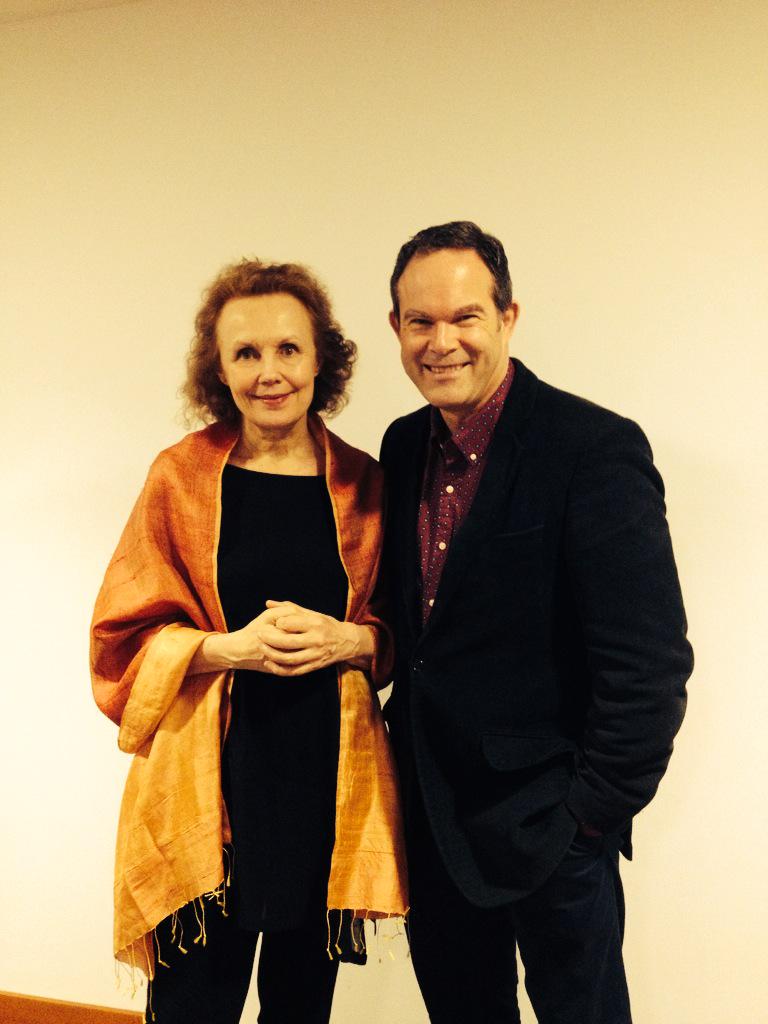 | |
| Stéphane Degout (photo: Julien Benhamou) |
Poulenc and Apollinaire featured, starting with the much loved early songs from Le bestiare (1919) where serious thoughts are disguised beneath playful images. These songs are funny, but also wistful. "Est-ce que la mort vous oublié, poissons de la mélancholie? " So much for the image of the golden carp, cavorting in unthinking bliss. Apollinaire's elegant insouciance acts like armour plating, protecting the soul from the cruelty of the world. The door to the hotel in Montparnasse (1945) is decorated with plants that will neither flower nor fruit. There are "raies sur lesquelles il ne faut pas que l'on marche" - thresholds that must not be crossed. "O, bon petit poète un peu bête trop blond " . Degout shaped that wonderful short phrase, bringing out its ironic anguish. the poet is pretty, and means well, but will always be a tourist, living on the surface, never connecting to reality. There's much more to these songs than charm, Degout brought out their painful undertones.
Degout and Tiberghien let Apollinaire himself speak, playing a recording of the poet himself reciting. A tiny fragment, preserved on grainy tape, a ghostly but powerful presence. "Joy and Melancholy" said Degout, "what Poulenc liked in Apollinaire". Thus we listened to the Calligrammes (1948), epigrammatic miniatures that seem torn from greater dramas beyond our knowledge. In Aussi bien que les cigales, the piano part evokes the stultifying heat of the Midi. where people seem hypnotized by complacency. "Que vous ne savez pas vous éclairer ni voir" sang Degout with a poignant mix of anger and sorrow. Lest we, too, be lulled by these moments of direct confrontation, Degout and Tiberghien launched into the livelier Quatre poèmes de Guillaume Apollinaire (1931) and Banalités (1940). In photographs, people pose and smile, masking whatever might really be happening. Apollinaire and Poulenc create snapshots, freeze framing human experience in tiny, concentrated fragments. It's up to the sensitive interpreter to develop them into wider scenarios. Alors, Avant le cinéma, where the text plays with words like "cinéma", "ciné" and "cinématographie". Degout paused, briefly, to highlight the irony. "Aussi, mon Dieu faut-il avoir du goût" ie, some folks don't care about what's really going on as long as they can be seen to have taste.
Alexis Descharmes, the cellist, introduced Kaija Saariaho's Cendres (1998) for alto flute, cello and piano. Saariaho's aim in this piece was to create musical tension by "sometimes bringing the instruments as close together as possible in all compositional aspects (such as pitch, rhythm, dynamics, articulation, colour), sometimes letting each of them express the music in their own most idiomatic way". The result is a well-balanced flow which generates colour and movement. The flute cries: is it the wailing of a wild bird ? Elaborate patterns in the piano part, the cello part full of invention. The piece is lucid, yet elusive by turns. Hearing Cendres in context with Poulenc and Apollinaire underlined the idea of listening simultaneously on different levels. The joy of mixed programmes like this which stretch the listener's experience!
Then, just as we began to appreciate the emotional sophistication of this programme, Degout and Tiberghien switched away, elusively, to Ravel. Chansons madécasses (1925-6) made use of the same forces as Cendres, Degout singing withn the same ensemble, so Ravel seemed to evolve out of Cendres as if a strange, exotic creature was being conjured up by magic. Nahandove, "L'oiseau nocturne a comencé ses cris". Delicious sensuality, yet also a tease. Degout emphasized the menace in the second song Aoua!, where the innocence of the islanders is betrayed . "Méfiez-vous des blancs, habitants du rivage". Promises poisoned by slavery and death. Just as Poulenc ended Calligrammes with a warning about complacency, Ravel ends with the image of an island girl who doesnt think about much beyond her immediate self. In Histoires naturelles (1906), the peacock, the cricket, the swan , the kingfisher and the guinea-fowl are beautifully observed nature portraits, yet they share something in common with the creatures in Poulenc and Apollinaire's Le bestiare because they are also oblique comments on the human condition.
Please also see my piece on Poulenc Apollinaire Les Bleuets


